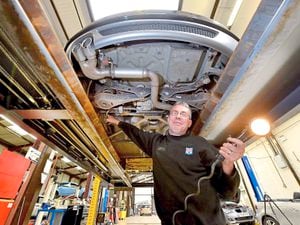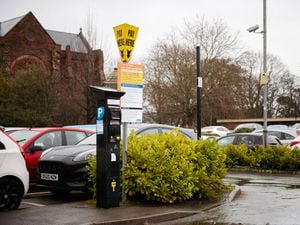Major changes in MOT test shake-up
Controversial changes to the annual MOT test come into force tomorrow, which mean it will be an offence to drive a car away from a garage if it has a fault deemed to be "dangerous" by the tester.

The changes will also see tighter regulations about emissions from diesel vehicles, and failures for cars which display engine management warning lights.
Drivers of cars more than 40 years old will no longer need to put their car in for the annual test.
The new rules have been introduced to comply with a new European directive which requires vehicles across the EU to be tested to an agreed standard.
But the ban on driving cars away which have been found to have "dangerous" faults have caused concern that they could create a "captive market", making it more difficult for motorists to take their car to another garage for a second opinion, or to "shop around" for the best deal on repairs.
Under the present rules, it is possible to book a car in before the existing MOT has expired, and continue using even after if fails so long as the previous MOT is still valid. From tomorrow, if a car fails on a fault that is considered "dangerous", it cannot legally be driven away from the workshop, and concerns have been expressed that unscrupulous garages could exploit that by failing cars unnecessarily or charging over the odds for repairs.
Darren Williams, an MOT tester with David Dexters garage in Bridgnorth, said the most important thing was to use a trustworthy and reputable garage.
"It does us no favours to tell somebody they can't take their car away unless they have an expensive repair," he said.
"You could make a bit of money the first time you did that, but you would never see them again. We prefer to have an ongoing relationship with our customers."
Faults are considered "dangerous" if they are deemed to present an immediate risk to road safety or have a serious impact on the environment.
"A completely bald tyre worn through to the canvas, could be considered to be a dangerous fault, or if you have got no brake lights working at tall, because nobody would have know when you were stopping," said Mr Williams.
"In the past, if you had a broken coil spring, you might just fail that, but from now on it might be considered dangerous."
Motorists can still arrange to have their vehicles taken away by trailer if they want to have them repaired elsewhere.
Mr Williams, who is 48, has been an MOT tester for 20 years, and said in his experience more cars passed first time than in the past.
While the changes will mean much tighter restrictions on diesel emissions, he said this was restricted to newer cars, and did not envisage it becoming a major problem.
"It only applies to newer cars, and most of these sail through the emissions tests, and will continued to do so," he said.
"There has been a lot of scaremongering about this."
Another change is that historic vehicles, registered on or before May 31, 1978, will not be required by law to take an MOT test from May 31 this year.
At the moment only cars registered before 1960 are exempt from the test but the changes will increase this to cars which are 40 years old or more.
Mr Williams said he believed that most responsible drivers would still continue to put their car in for the MOT to ensure that they were roadworthy.





